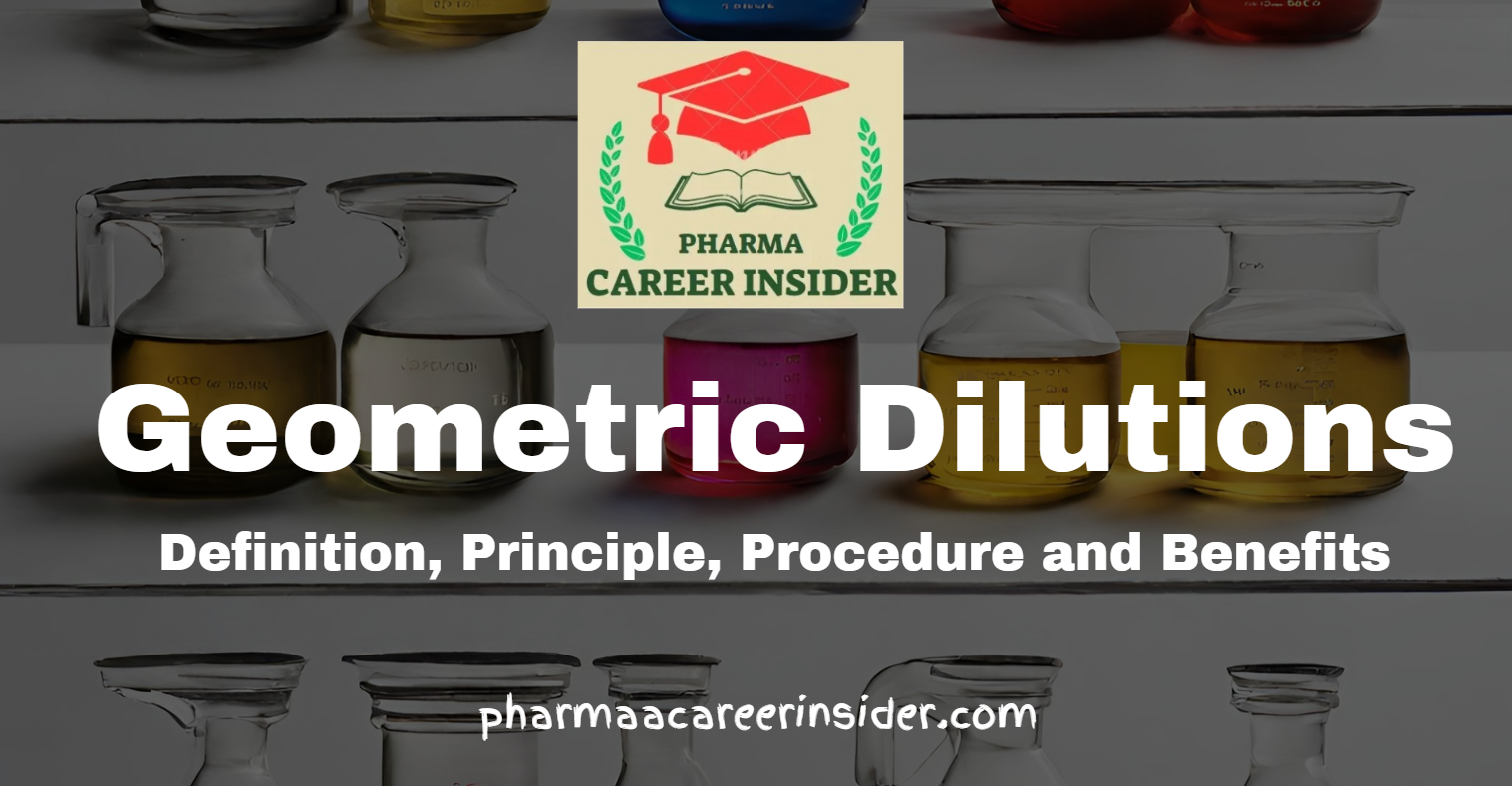Geometric dilution is a technique used in pharmaceutical compounding to ensure the uniform distribution of a potent or concentrated substance throughout a mixture. This method is particularly important when working with small quantities of potent drugs or active ingredients to achieve accurate and consistent dosages in the final product.
Key Principles of Geometric dilution
1. Incremental Mixing:
– Geometric dilution involves adding small portions of the concentrated substance to an increasingly larger diluent (usually a powder or vehicle).
– This incremental process ensures that the concentrated substance is evenly distributed throughout the mixture.
2. Uniform Dispersion:
– The goal is to achieve a uniform dispersion of the active ingredient in the final mixture, minimizing the risk of dose variability.
3. Preventing Clumping:
– Geometric dilution helps prevent clumping or uneven distribution of the potent substance, especially in a powdered form.
Procedure
1. Stepwise Addition:
– Begin by adding a small portion of the concentrated substance to a portion of the diluent.
– Mix or triturate thoroughly until the concentrated substance is evenly distributed in this smaller quantity.
2. Incremental Increase:
– Add an equal amount of the concentrated substance to the mixture and mix thoroughly again.
– Continue this process, incrementally increasing the quantity of the mixture by adding more diluent and concentrated substances in equal proportions.
3. Repeat Until Complete:
– Repeat the process until the entire quantity of the concentrated substance is incorporated into the final mixture.
Applications of Geometric dilution
1. Compounding Potent Drugs:
– Geometric dilution is commonly used when compounding drugs with potent active ingredients, especially when the active ingredient is in small quantities.
2. Homogeneity in Formulations:
– Ensures homogeneity in compounded formulations, reducing the risk of inconsistent dosages within the same batch.
3. Powder Blending:
– Applicable in compounding powder blends where the precise distribution of active ingredients is critical.
Benefits of Geometric dilution
1. Accuracy in Dosing:
– Geometric dilution promotes accuracy in dosing by evenly distributing small quantities of potent substances throughout a larger mixture.
2. Uniformity:
– Helps achieve uniformity in the final product, minimizing the risk of hotspots or areas with higher concentrations.
3. Reduced Clumping:
– Minimizes the potential for clumping or uneven distribution of the active ingredient, enhancing the physical characteristics of the formulation.
Geometric dilution is a valuable technique in pharmaceutical compounding, particularly when working with potent substances. Gradually incorporating a concentrated ingredient into an increasing quantity of diluent ensures accuracy, uniformity, and homogeneity in the final compounded product. Pharmacists and compounders utilize geometric dilution to enhance the precision and consistency of dosages, contributing to compounded medications’ overall quality and efficacy.



